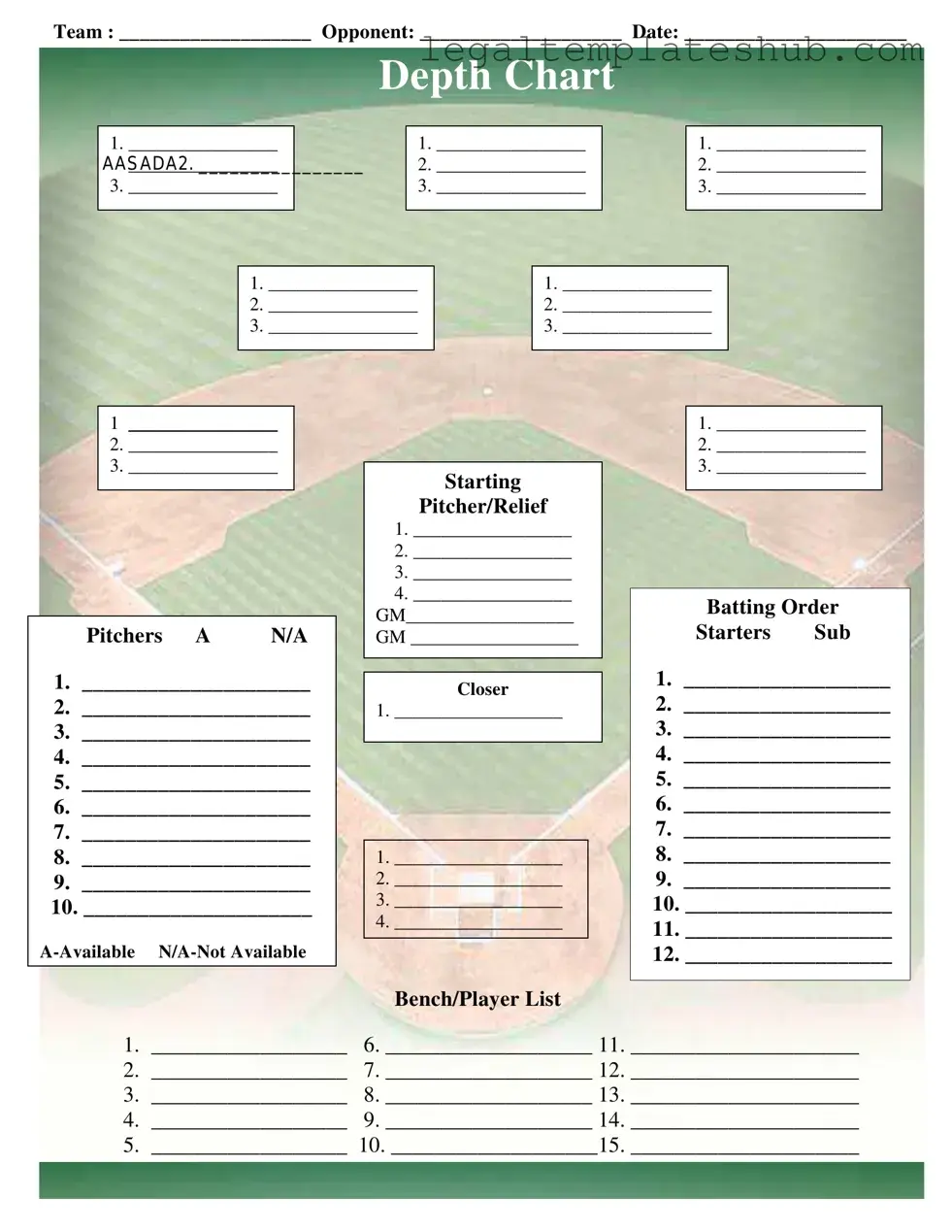Blank Baseball Field Lineup PDF Form
The Baseball Field Lineup form is an essential tool used by coaches and team managers to organize player positions, batting order, and pitching assignments for a game. This form helps ensure that every player is accounted for and that the team is prepared for competition. To streamline your game day preparations, please fill out the form by clicking the button below.
Access Editor
